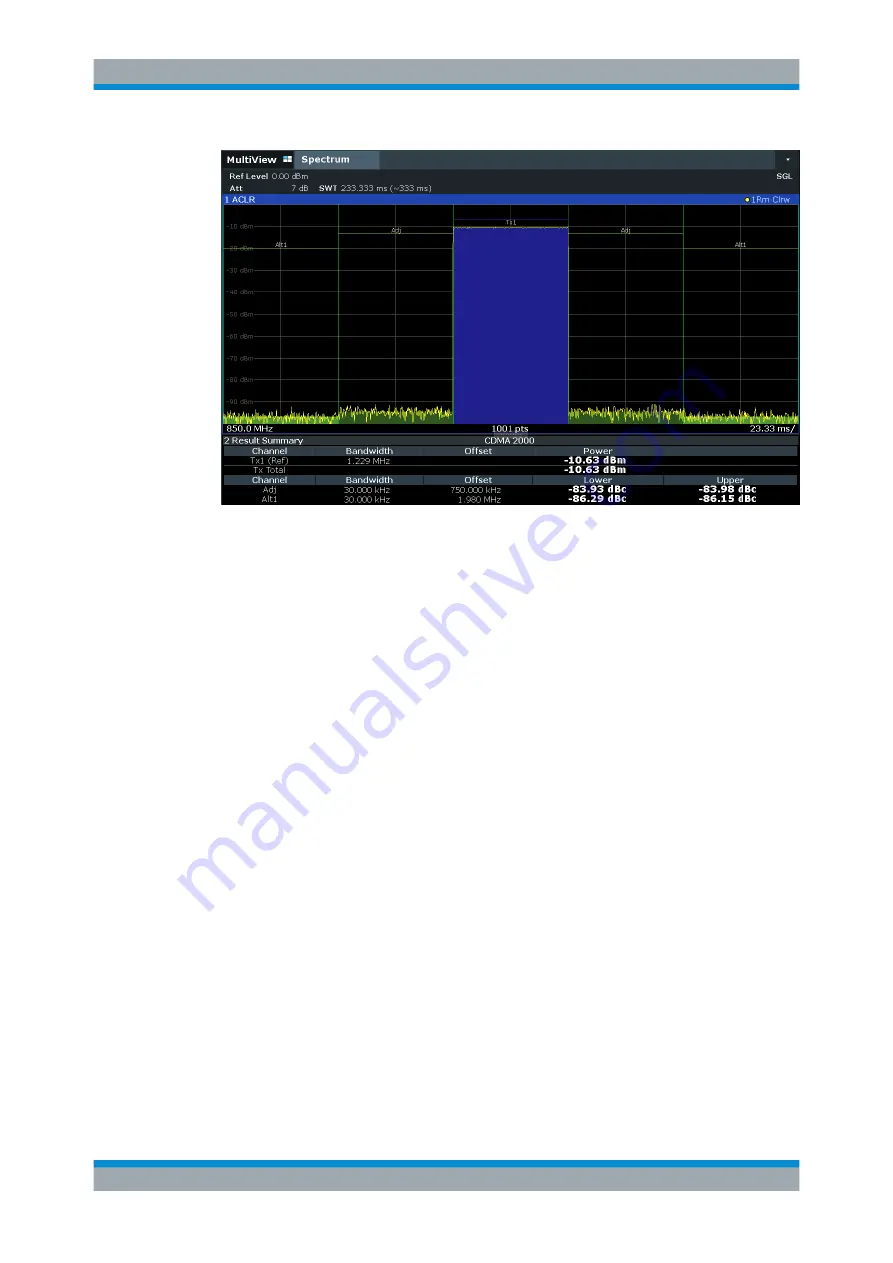
Measurements and Results
R&S
®
FSVA3000/ R&S
®
FSV3000
148
User Manual 1178.8520.02 ─ 01
Figure 7-21: Measuring the channel power and adjacent channel power ratio for CDMA2000
signals
with zero span (Fast ACLR)
7.3.3.2
Measurement Repeatability
The repeatability of the results, especially in the narrow adjacent channels, strongly
depends on the measurement time for a given resolution bandwidth. A longer sweep
time can increase the probability that the measured value converges to the true value
of the adjacent channel power, but obviously increases measurement time.
Assume a measurement with five channels (1 channel plus 2 lower and 2 upper adja-
cent channels) and a sweep time of 100 ms. This measurement requires a measure-
ment time per channel of 20 ms. To calculate the power in one channel, the analyzer
considers the following number of effective samples:
<sweep time in channel> * <selected resolution bandwidth>
For example, for a sweep time of 100 ms the analyzer considers (30 kHz / 4.19 MHz) *
100 ms * 10 kHz ≈ 7 samples. Whereas in Fast ACLR mode, it considers (100 ms / 5) *
30 kHz ≈ 600 samples. If you compare these numbers, you understand the increase of
repeatability with a 95
% confidence level (2δ). It rises from ±
2.8
dB in normal mode to
±
0.34
dB in Fast ACLR mode for a sweep time of 100
ms.
For the same repeatability, the integration method requires a sweep time of 8.5
s. The
shows the standard deviation of the results as a function of the sweep
time.
Channel Power and Adjacent-Channel Power (ACLR) Measurement
















































